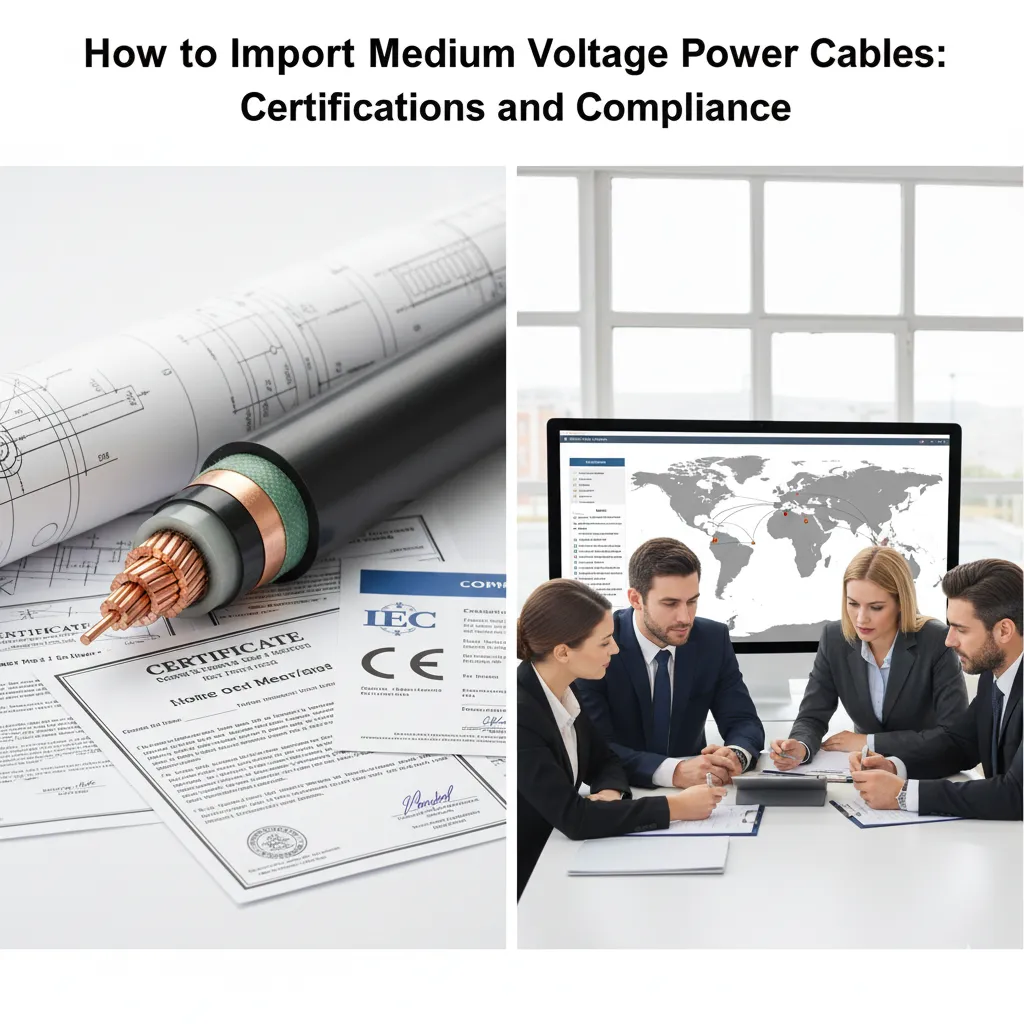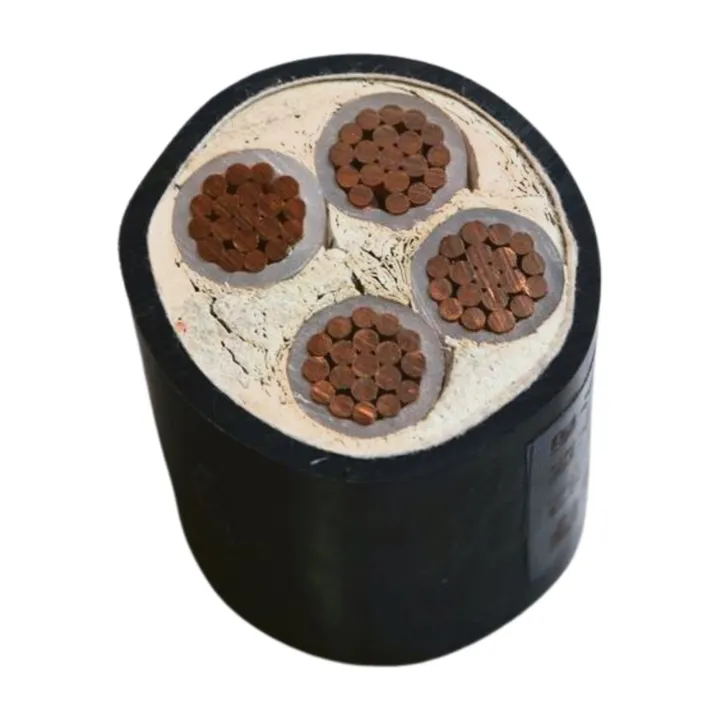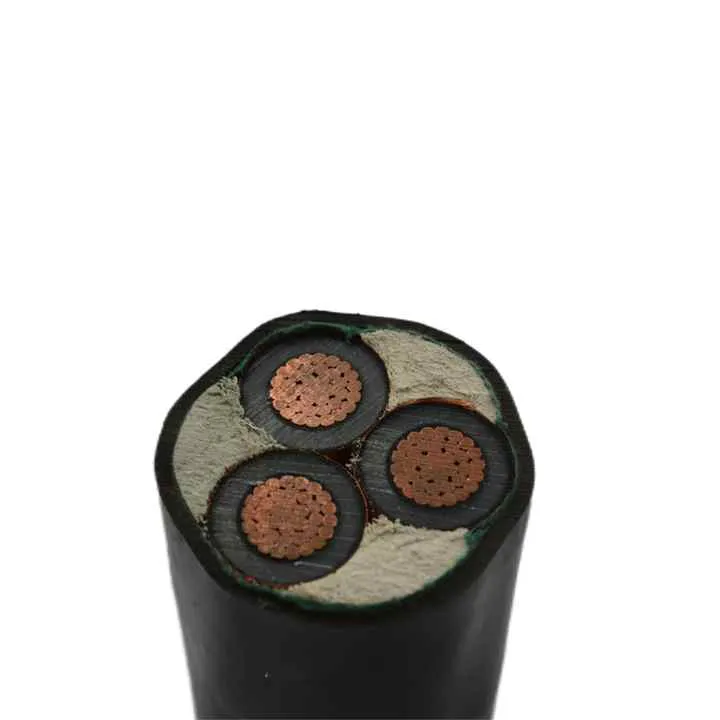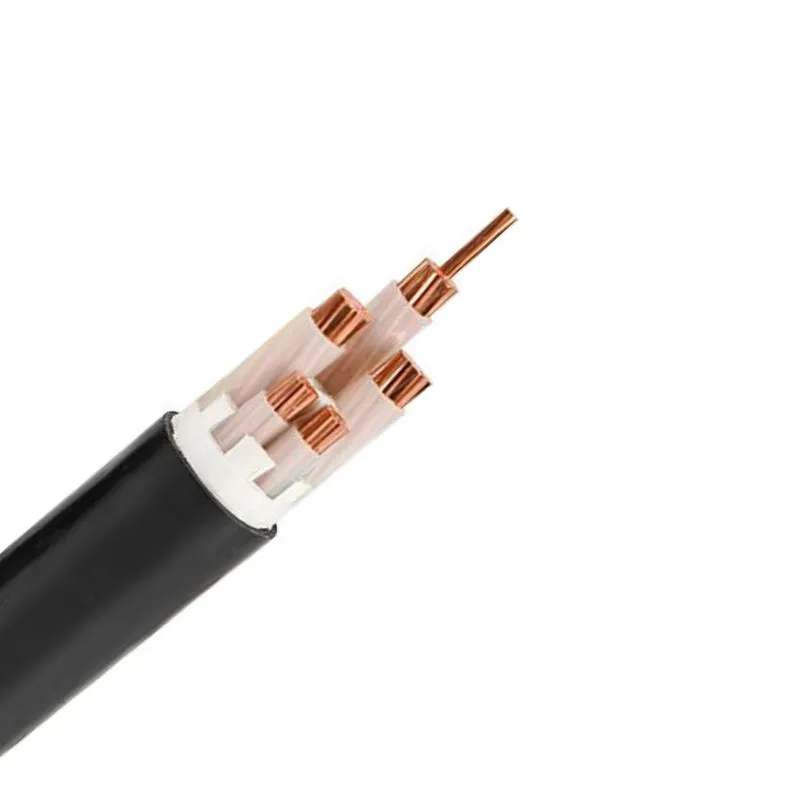Time: 2025-10-10 04:16:38 Source: Henan Province Jianyun Cable Co., Ltd.
Importing medium voltage (MV) power cables, rated from 6 kV to 35 kV per IEC 60038, requires strict adherence to certifications and compliance requirements to ensure safety, quality, and market access. These cables are used in industrial, utility, and infrastructure projects, and non-compliance can lead to customs rejections, project delays, or safety risks.

Importing MV power cables involves sourcing from manufacturers, verifying compliance with international and destination-specific standards, and navigating customs procedures. MV cables, often featuring XLPE insulation, copper or aluminum conductors, and steel wire armoring (SWA), must meet rigorous requirements for electrical performance (e.g., insulation resistance >1000 MΩ/km), safety (e.g., flame-retardant per IEC 60332-3), and environmental resistance. Jianyun Cable provides TUV- and CCC-certified MV cables, ensuring reliability for global import projects.
Certifications verify that MV cables meet safety and performance standards, facilitating import and market acceptance. Key certifications include:
| Certification | Region | Details |
|---|---|---|
| IEC 60502-2 | Global | MV cable construction, testing, performance. |
| TUV | Europe/Global | Third-party verification for IEC, EN standards. |
| CCC | China | Mandatory for Chinese-manufactured products. |
| UL 1072 | North America | Safety and flame-retardant for MV cables. |
| CE Marking | Europe | Compliance with LVD, RoHS directives. |
Importing MV power cables involves several steps to ensure compliance and smooth customs clearance:
| Step | Action |
|---|---|
| Identify Requirements | Determine specs, research regulations. |
| Select Supplier | Choose certified manufacturers like Jianyun Cable. |
| Verify Certifications | Request reports, validate via databases. |
| Place Order | Include HS codes, prepare documents. |
| Arrange Shipping | Use sea freight, ISPM 15 drums. |
| Clear Customs | Submit CoC, pay duties. |
| Post-Import Testing | Test insulation, voltage drop. |
Compliance varies by region, with key requirements including:
| Region | Key Certifications | Standards |
|---|---|---|
| Europe | CE, TUV | LVD, CPR, RoHS/REACH |
| North America | UL 1072, CSA | NFPA 70 (NEC) |
| Middle East | G-Mark, SABER, ECAS | IEC 60502-2, SASO/IEC |
| China (Export) | CCC | GB/T 12706 |
| Challenge | Solution |
|---|---|
| Regulatory Variations | Partner with consultants (e.g., Intertek) for market-specific guidance; use dual-certified cables (e.g., TUV/IEC). |
| Counterfeit Certifications | Verify via official databases (e.g., TUV Certipedia); source from Jianyun Cable with authentic TUV/CCC. |
| Customs Delays | Prepare complete documentation (CoC, test reports); use experienced forwarders (e.g., DHL). |
| High Costs | Negotiate bulk discounts; use aluminum conductors for non-critical runs if compliant. |
| Quality Issues | Request samples and third-party testing; perform post-import inspections. |
Importing medium voltage power cables requires a structured approach to certifications (e.g., IEC 60502-2, TUV, CCC) and compliance (e.g., RoHS/REACH, CE) to ensure safety and market access. By identifying requirements, selecting certified suppliers like Jianyun Cable, verifying documents, and navigating customs, importers can achieve successful outcomes. Regional variations (e.g., SABER for Saudi Arabia, UL for North America) necessitate tailored strategies. Addressing challenges like regulatory differences and counterfeit products through verification and partnerships ensures reliable MV cables for industrial, utility, and infrastructure projects, supporting a lifespan of 25–30 years.

NA2XS(f)2Y 6/10KV 12/20KV 120 150 185 240 300MM2 Single Conductor Xlpe Insulated

Grounding Cable 3 Core 95mm2 150mm2 240mm2 Aluminum High Voltage Cable

5x35mm 5x25mm Low Voltage Power Cable With PVC Sheath Copper Conductor XLPE Insu

A medium voltage three core armoured power cable is designed for the reliable tr